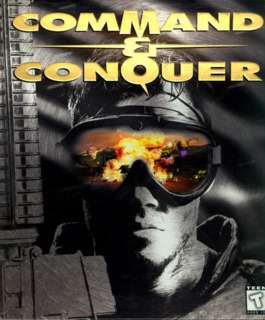Where its peers strived for outlandish stories and impressive arrays of in-game models, the developers of the first Command & Conquer intended it to be the trend-starter of fast and streamlined gameplay in the market of real-time strategy games.
In retrospect, this is perhaps Command & Conquer's greatest contribution to the RTS genre. Where its spiritual predecessor, Dune II was a relatively slow paced game where each combatant - be it vehicle or infantry squad - had to be painstakingly sent to the front-lines one-by-one from the buildings that produced them, C&C introduced a selection and control system that allows players to send entire hordes of units after an objective - an apparent result of the developers (the now-defunct Westwood in this case) listening to customer complaints, identifying weaknesses in game design and addressing them.
Where its peers struggled with the mechanics of management of units, resource economics and production, Command & Conquer had the advantage of the aforementioned unit control scheme, a self-replenishing resource and a simple production menu that can be accessed from anywhere within the battlefield, along with the option of placing building projects on hold (a trait that was perfected in a certain major RTS game a few years later). This obviously became an apparent trademark of the series, one easily recognizable by fans and RTS pundits alike.
It is also perhaps the first game with an original backstory that actually supplies the traits of the gameplay - likely a result of the developers noticing that the backstory of Dune II allowed for the utilization of a special resource (that is, the melange spice). The main resource in Command & Conquer, the series' trademark Tiberium crystals, is perhaps the RTS genre's first truly reliable source of income needed to power base economies. Where its peers suffer from lack of programming talent needed to design self-replenishing resources, C&C's effortlessly ever-spreading Tiberium negates the need for players to quickly secure economic points in the battlefield. This has the perhaps-favorable result of eliminating the tug-of-war over economic points inherent in other RTS games, which this reviewer finds ugly to observe and/or experience.
In addition to retaining the feature of utilizing hardy units to harvest resources from Dune II, the developers have designed Tiberium to be lethal to early-game units, further reducing the effect of the often match-breaking tactic of early in-game raids against opponent's economic assets.
While Command & Conquer was not the first game to feature units modeled after real-world military hardware, it was the first to offer a "what-if" theme with peculiarly new (at the time) units such as the series' iconic Stealth Tanks, Flame Tanks and of course, the treadheads' favorite, Mammoth Tanks. The game certainly did not inspire the real-world development of the aforementioned vehicles (for better or worse), but it was certainly food-for-thought for the developers of later RTS games.
Unfortunately, despite having been a ground-breaking game, C&C was not without its flaws.
Where the gameplay design was strong, the design of missions, however, was poor and rather weak. Objectives were sometimes poorly explained (and most of them in FMV cutscenes which most impatient players would skip) and difficult to follow, much less achieved. This is especially so in missions where the game forces players to make do with small forces arraigned against great odds. The most effective way to review mission objectives is to restart them and watch the fop-filled FMV cutscenes (also now a trademark - albeit a dubious one - of the series).
The game is also a victim of its own innovations. Where other games allowed players to build multiple production buildings to speed up the accumulation of a viable army, C & C allows no such strategic decisions. Every duplicate production building does no other function other than being an alternate exit for newly produced units, with nary a reduction in the purchase price of said buildings. (This is a flaw that the developers alleviated somewhat in a cousin game of the Tiberian series later, and eventually eliminated completely a less-than-recent entry to the series.)
The code for the self-replenishing resource that is Tiberium was also too efficient for its own good. Given enough time - and lack of harvesting work - Tiberium can eventually overrun the entire map, rendering infantry units unusable as well as generating a mess of green onto the already bare-bones minimap.
Gameplay balance is also another major issue. Where one of the two factions in the game has a practically unstoppable super-weapon, the other has a relatively puny one with no appreciable advantages over the other, leading most players of the former faction to race to attain the superweapon in just about every match. On the other hand, the other faction has armored units that are virtually unstoppable once massed and, even if not massed, are still more durable credit to credit compared to any units of the first faction. Some units were also quite useless, despite their espoused advantages.
Of course, one can say that these flaws were actually a blessing, for they exposed design pitfalls that interested parties in the RTS genre should avoid. Rather than being a detrimental turn-off, this is a benefit to the reputation of every ground-breaking game, and Command & Conquer certainly was one.

